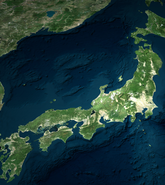NEWARK, CA – September 6, 2021 – RMS®, the world’s leading catastrophe risk solutions company, estimates onshore and offshore U.S. insured losses from Hurricane Ida in the Gulf of Mexico to be between US$25 and US$35 billion. The estimate includes losses to the National Flood Insurance Program (NFIP) in the four impacted Gulf Coast states (Alabama, Florida, Louisiana and Mississippi) in the range of US$2.3–$4 billion.
Onshore and offshore insured loss estimates for Hurricane Ida (US$ billions) in the Gulf Coast states:
|
Wind + Surge
|
Inland Flood (Gulf states only)
|
NFIP (Gulf states only)
|
Offshore Energy
|
Total
|
|
21 – 28
|
1.0 – 1.5
|
2.3 - 4.0
|
0.7 to 1.5
|
25 – 35
|
This estimate includes wind, storm surge, and inland flood losses across only the impacted Gulf states in the landfall region — Alabama, Florida, Louisiana and Mississippi — based on analysis of RMS ensemble footprints in Version 21 of the RMS North Atlantic Hurricane Models and estimates from the RMS U.S. Inland Flood HD Model. RMS ensemble footprints are reconstructions of Ida’s hazard that capture the uncertainties surrounding observed winds and storm surge. This estimate excludes wind and inland flooding impacts in Ohio Valley, Mid-Atlantic, and Northeast U.S. regions, which will be communicated in the coming days once the full extent of damage is known.
“Ida was truly a multi-faceted event in terms of hazard and loss impacts. RMS virtual reconnaissance efforts and analysis of aerial imagery show widespread wind and water-related damage in Louisiana and neighboring Gulf Coast states, including many severe or total structural losses. From a wind perspective, this storm was a design level event, where observed wind speeds often exceeded speeds that buildings have been designed to withstand, particularly in the hardest hit areas in southern Louisiana. Many areas impacted by Ida’s winds were also impacted by storm surge, precipitation-induced flooding, and the hurricane events of 2020. In these instances, loss attribution and differentiation may become more complex, leading to longer claims settlement periods,” said Jeff Waters, Senior Product Manager, RMS North Atlantic Hurricane Models.
Losses reflect property damage and business interruption to residential, commercial, automobile, industrial, infrastructure, marine cargo and specie, watercraft, and other speciality lines of business, along with post-event loss amplification (PLA) and non-modeled sources of loss.
“Ida was near Category 5 intensity at its landfall and remained for six hours at Category 4 intensity moving inland. The buildings and infrastructure in this region have never experienced such a strong hurricane wind intensity. Due to major damage to power plants, as well as transmission and distribution lines, the widespread power outage will significantly delay full recovery. We expect material impacts to specialty lines from this event. Southern Louisiana has a high concentration of petrochemical plants, refineries, marine cargo and port exposures, power plants and other high-value industrial facilities that were impacted by Ida. These businesses rely heavily on the state’s power grid. With prolonged anticipated recovery times, we expect material business interruption losses to these lines on top of varying degrees of infrastructure damage they sustained,” said Mohsen Rahnama, Chief Risk Modeling Officer, RMS.
The estimate also includes US$2.3–$4 billion losses to the National Flood Insurance Program (NFIP) in the Gulf Coast states. NFIP losses were derived using RMS’ view of NFIP exposure based on 2019 policy-in-force data published by FEMA, the Version 21 North Atlantic Hurricane Models, and the U.S. Inland Flood HD Model.
RMS expects insured wind losses in this event to be driven by residential lines, and insured water-related losses to be dominated by commercial and industrial lines.
Additionally, RMS estimates insured losses to offshore platforms, rigs, and pipelines in the Gulf of Mexico to be between US$0.7–$1.5 billion from wind and wave-driven damages. Offshore losses are based on the August 2021 vintage of the RMS Offshore Platform Industry Exposure Database.
“Ida damaged many offshore platform-related hubs and staging facilities in coastal Louisiana, including Port Fourchon. As a result, more than 90 percent of the Gulf of Mexico oil and gas production is still shut-in, representing approximately 15 to 20 percent of the U.S. total fuel supply. Offshore damage surveys to date, reviewed by the RMS Geospatial Analysis team, indicate wind and wave-driven damage to several high-valued platforms. Inspections and damage assessments are still ongoing, so, it’s likely we won’t know the full extent of loss to this sector for several weeks. However, as Ida tracked quickly through the Gulf, the lower than expected wave heights are expected to limit physical damage to rigs and platforms,” said Rajkiran Vojjala, Vice President, Model Development, RMS.
Ida made landfall near Port Fourchon, Louisiana, on Sunday, August 29 as a Category 4 hurricane on the Saffir-Simpson Hurricane Wind Scale. At landfall, Ida produced sustained winds of 150 miles per hour (241 km/h), according to the National Hurricane Center. Informed by a suite of public and private real-time observational data sources, RMS HWind products estimated comparable winds at landfall. The track, landfall location, and intensity were also anticipated and captured by the HWind forecasting products several days prior to landfall.
“As expected, Ida underwent rapid intensification in the hours leading up to landfall as it moved over favorable oceanic and atmospheric conditions in the Gulf of Mexico. At landfall, the storm was most similar to that of Hurricanes’ Betsy (1965), Camille (1969), and Laura (2020) in terms of intensity and overall Integrated Kinetic Energy. Remarkably, the storm maintained its Category 4 intensity for six hours after landfall. Ida’s slow rate of decay was due to unique surface roughness conditions in that region, which limited the frictional weakening effects it could impose on the storm. That combined with an eastward shift in the track closer to areas of high exposure, such as the New Orleans metropolitan area, exacerbated wind and water-related impacts further inland,” said Tom Sabbatelli-Goodyer, Director, Event Response, RMS.
Hurricane Ida was the ninth named storm of the 2021 North Atlantic hurricane season, the fourth hurricane, and the fifth named storm to make landfall in the U.S. this season. Ida was also the fourth hurricane to make landfall in Louisiana since 2020, following Hurricanes’ Laura, Delta, and Zeta. Over two months still remain in the 2021 North Atlantic hurricane season, officially ending on November 30.
RMS industry loss estimates for landfalling U.S. hurricanes are comprehensive, reflecting modeled and non-modeled impacts from all major drivers of damage, including wind, storm surge, and inland flooding.
END
The technology and data used in providing the information contained in this press release are based on the scientific data, mathematical and empirical models, and encoded experience of scientists and specialists. As with any model of physical systems, particularly those with low frequencies of occurrence and potentially high severity outcomes, the actual losses from catastrophic events may differ from the results of simulation analyses.
RMS SPECIFICALLY DISCLAIMS ANY AND ALL RESPONSIBILITIES, OBLIGATIONS AND LIABILITY WITH RESPECT TO ANY DECISIONS OR ADVICE MADE OR GIVEN AS A RESULT OF THE CONTENTS OF THIS INFORMATION OR USE THEREOF, INCLUDING ALL WARRANTIES, WHETHER EXPRESS OR IMPLIED, INCLUDING BUT NOT LIMITED TO, WARRANTIES OF NON-INFRINGEMENT, MERCHANTABILITY AND FITNESS FOR A PARTICULAR PURPOSE. IN NO EVENT SHALL RMS (OR ITS PARENT, SUBSIDIARY, OR OTHER AFFILIATED COMPANIES) BE LIABLE FOR DIRECT, INDIRECT, SPECIAL, INCIDENTAL, OR CONSEQUENTIAL DAMAGES WITH RESPECT TO ANY DECISIONS OR ADVICE MADE OR GIVEN AS A RESULT OF THE CONTENTS OF THIS INFORMATION OR USE THEREOF.





